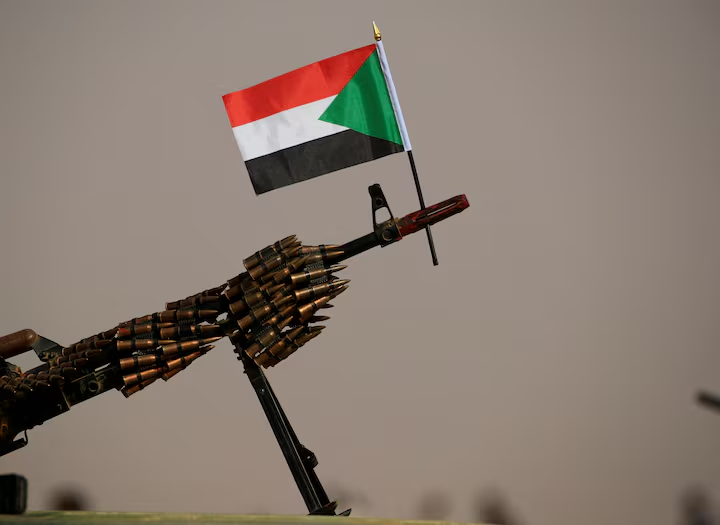
By: Yusuf M Hasan
HARGEISA (Somalilandsun) – Citizens have been asked to deter from establishing homesteads or settling in known sites of mass graves anywhere in the country.
According to the National Massacre Investigations Committee-NMIC the encroachment on mass grave sites is a major encumbrances to national efforts geared towards chronicling the sites which is the committee’s main mandate.
At a press conference held at the NMIC headquarters in Hargeisa the committee’s Chairperson Kadar Ahmed Lekey urged regional and local authorities to help protect the mass graves sites in their areas by deterring encroachment.
The National Massacre Investigations Committee is the body mandated with investigating sands unearthing crimes against humanity committed during the reign of dictator Mohamed Siad Barre especially in the 1980’s when over 50,000 somalilanders were butchered and a majority haphazardly buried in Mass graves.
“If the current trend of settling in known mass graves sites observed by NMIC is not reversed then the only evidence of Barre’s crimes against humanity shall be minimal thus difficult to pursue prosecution of perpetrators wherever they are” said Lekey.
On the issue of expanding the committee’s activities nationwide Mr. Lekey who informed that only the headquarters in the capital city Hargeisa is currently operational said, “We are in the process of establishing regional offices once budgetary constraints are overcome”
While urging concerted efforts by all somalilanders towards preserving the mass graves the NMIC also appealed for support especially regards to suspected sites of mass graves.
In 2012 an exercise to unearth mass graves in the country jointly undertaken by the The Peruvian Forensic Anthropology Team – EPAF and the Somaliland National Massacre Investigations Committee-NMIC the revealed the existence of over 200 mass graves officially recorded thence target for subsequent exhumations that saw the EPAF mission manage only a few within Hargeisa and Gabile regions.
While informing that most of the mass graves documented has a minimum of 12 corpses the national Massacre investigations committee, which is supported the EPAF gave the following breakdown of mass graves so far identified:
I. Hargeisa (Maroodi-Jeeh region) – 200 mass graves
II. Berbera (Sahil region) – 12 mass graves
III. Burao (Toghdeer region) – 8 mass graves
IV. Sheikh (Sahil region) – 1 mass grave
V. Erigavo (Sanaag region) – 2 mass graves
VI. Arabsiyo (Gabile region) – 1 mass grave
The joint EPAF and NMIC exhumations result from the enforced disappearances, extrajudicial executions, torture and other human rights violations perpetrated during the reign of dictator Siad Barre whose underlings are credited with the over 60,000 deaths and hundreds of unexplained disappearances

One of the main perpetrators in this case is General Mohamed Ali Samatar, who was Vice President and Defense Minister of the Democratic Republic of Somalia from 1980 to 1986. In January 1987, Samatar took over as Prime Minister of Somalia, until the fall of Barre dictatorship in 1990.
The Peruvian Forensic Team-EPAF which also trained local forensic personnel and college students of biomedical sciences in order to avail of the country relevant forensic expertise is a non-profit organization that promotes the right to truth, justice, and guarantees of non-repetition in cases of forced disappearance and extrajudicial execution. EPAF seeks to contribute to the consolidation of peace and democracy where grave human rights violations have taken place by working alongside the families of the disappeared to find their loved ones, gain access to justice, and improve the conditions affecting their political and economic development.
Related
Somaliland: Mass graves discovered in 1997 after rains expose skeletons and shallow graves in Hargeisa
Somaliland: Evidence of War Crimes Unearthed
EPAF exhumations begin in Somaliland
Somaliland: Revisiting the Siad Barre Massacres





















![Somalia: How I silenced the ghosts of war” Ex KDF Sniper KDF spokesman Joseph Owuoth during a press conference at Defence Forces Headquarters in Nairobi. [Boniface Okendo,Standard]](https://i0.wp.com/somalilandsun.com/wp-content/uploads/2025/01/3weEEfVsWimjDyp6nescuDdu3NvvhMEIbD5Dcc9l1.png?resize=100%2C70&ssl=1)












